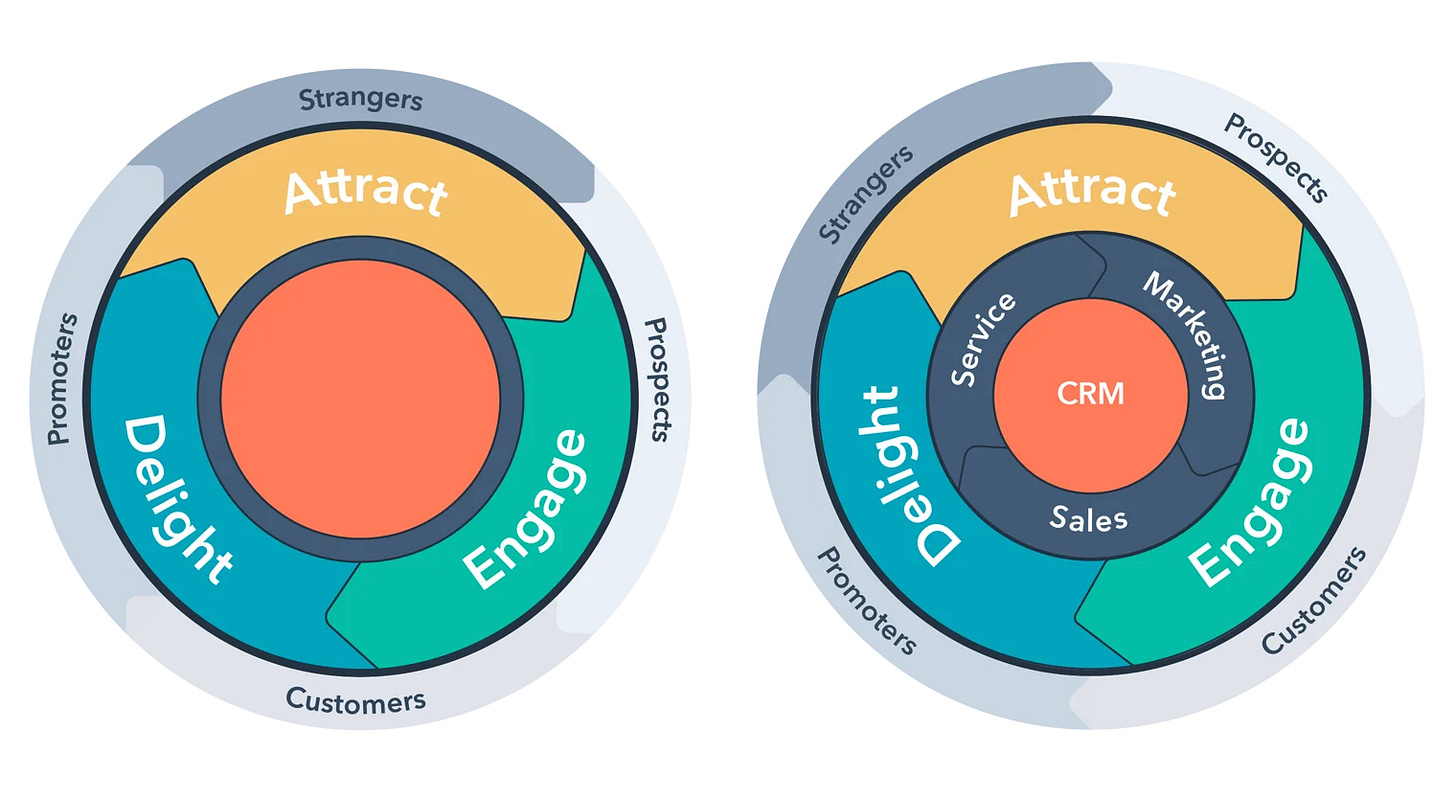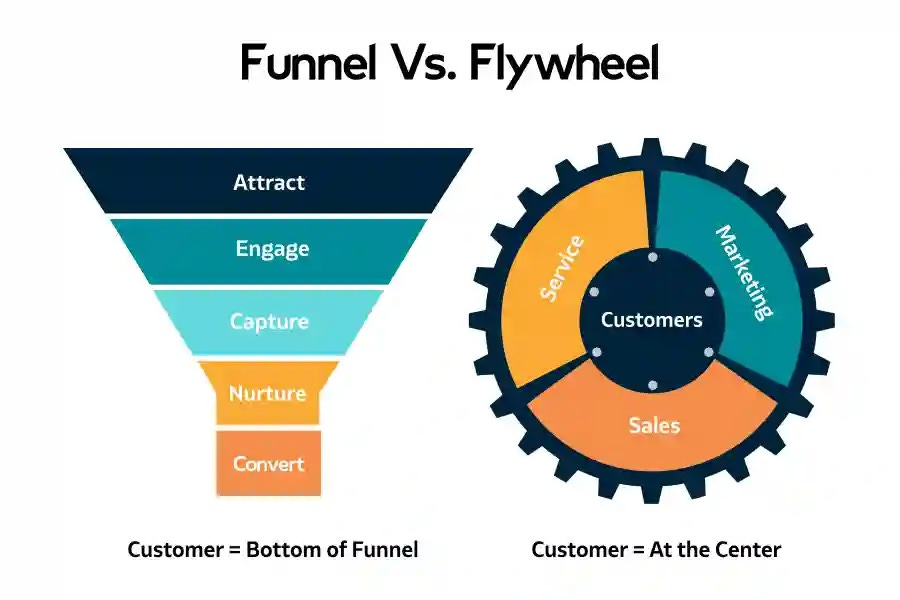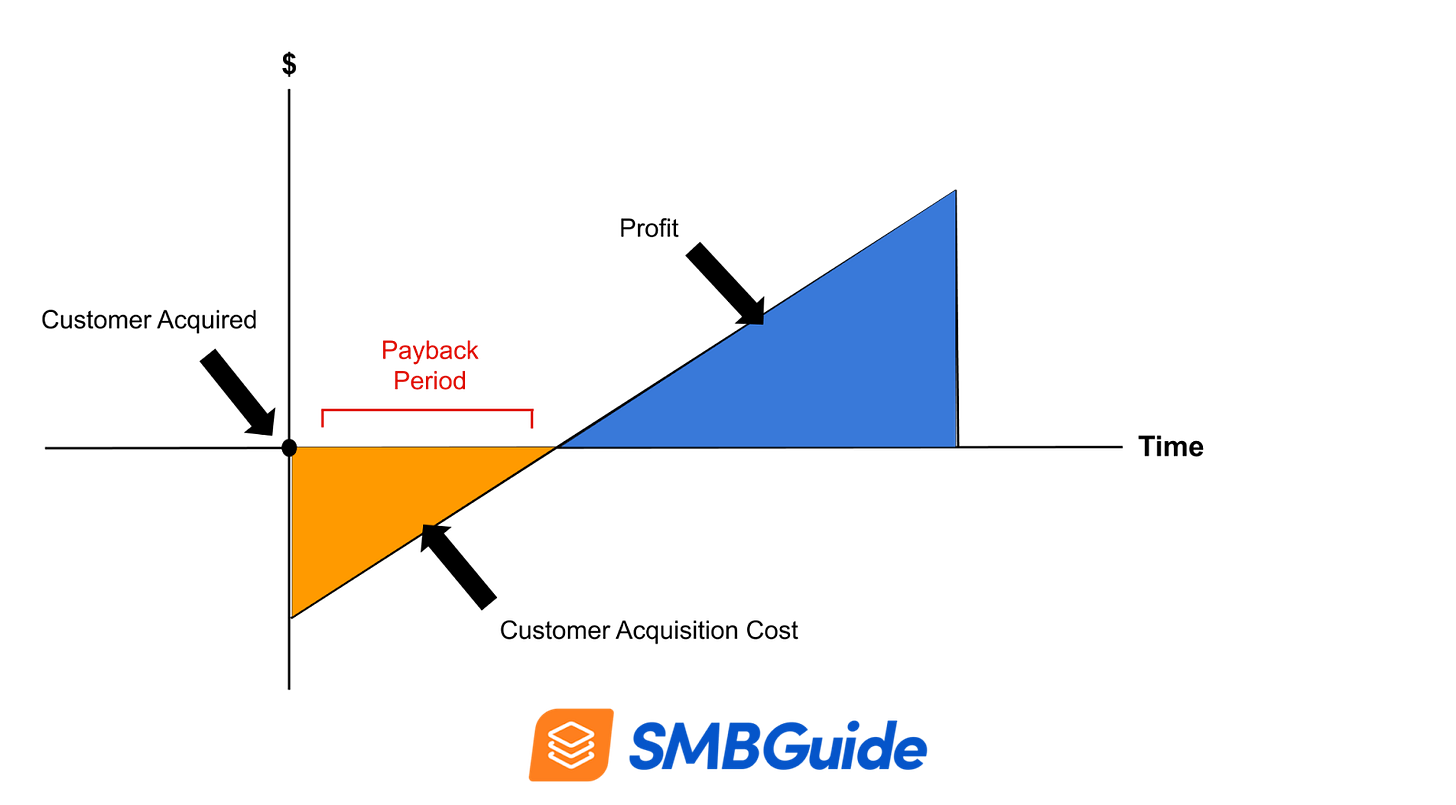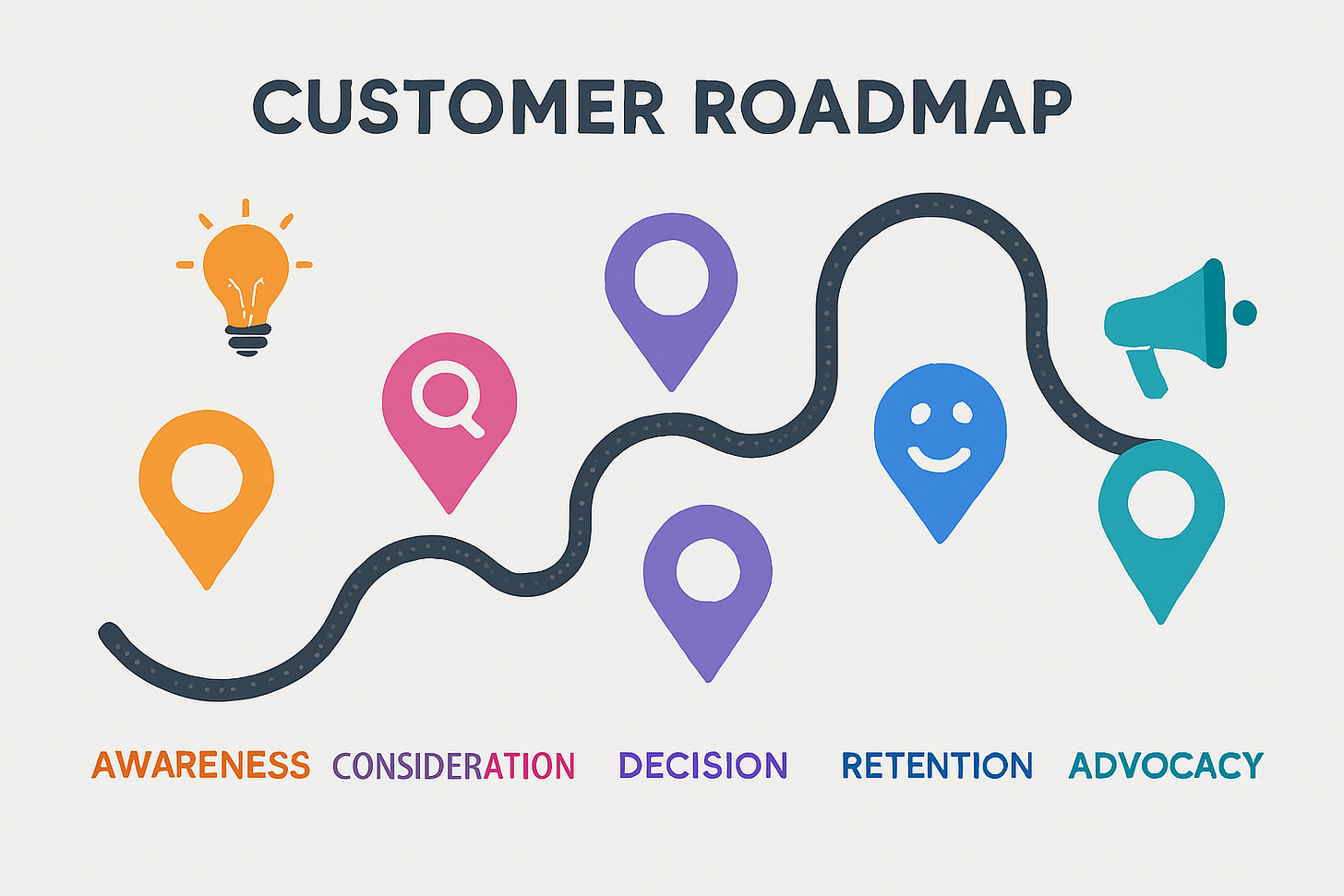Funnels Get Customers, Flywheels Keep Them
Small Business OS: In Part 3 on mastering sales funnels, we show you how to turn customers into lifelong promoters.
Part 1 of The Playbook for High-Converting Sales Funnels covered the main elements of a sales funnel. We discussed some effective conversion techniques, such as urgency, social proof, and calls to action.
In Part 2, we explored different types of sales funnels, such as lead generation funnels, webinar funnels, and product launch funnels. Each has its purpose, but all of them share the same goal, which is to move potential customers through the sales process toward a purchase.
For our finale in Part 3 on mastering sales funnels, we’re going beyond the sale. Funnels can help you get the customer, but what about after they buy?
This is where the flywheel comes in. A flywheel is your sales funnel's best friend. While your funnel brings customers in, your flywheel keeps them engaged, delighted, and ready to refer new business your way. It turns happy customers into loyal promoters, which is exactly what you want long term.
Integrating a flywheel with your existing funnel can reduce acquisition costs, increase customer retention, and drive steady, organic growth. Simply put, your business gains momentum from satisfied customers rather than continuously spending on new ones.
Table of Contents
1. Going Beyond the Funnel: Building Momentum with Flywheels
2. Funnel and Flywheel: Working in Tandem
3. Flywheels to Implement Based on Your Business
4. Choosing the Right Flywheel Approach
5. How to Fuel Your Flywheel for Business Growth
6. Flywheel KPIs for Successful Growth
7. Putting Your Flywheel into Action
1. Going Beyond the Funnel: Building Momentum with Flywheels
Funnels and flywheels are fundamentally different in approach. A marketing funnel is linear, aiming simply to convert leads into customers. Once the customer buys, the funnel often ends.
Flywheels, on the other hand, operate cyclically. They don't stop at conversion but aim to retain customers, continually building momentum. Flywheels strengthen customer relationships and loyalty, creating an ongoing cycle of engagement.
This continuous engagement is the key to momentum. Every retained customer adds energy, fueling further growth through referrals and repeat purchases. Think of an actual flywheel: the more energy, the faster it spins.
2. Funnel and Flywheel: Working in Tandem
Funnels and flywheels don’t have to compete. They’re stronger together. Your funnel brings customers in, while your flywheel keeps them engaged and loyal.
The Flywheel’s Three Forces: Attract, Engage, Delight

Every happy customer adds momentum to a flywheel. They buy again, tell friends about you, and write positive reviews. These actions bring more new customers organically, lowering your costs to attract new customers and boosting profits.
Your flywheel runs on three forces: attracting, engaging, and delighting. Marketing attracts by pulling people in with relevant, valuable content. Sales engages and builds personal connections, guiding prospects toward a purchase. Customer service ensures customers are delighted long after buying, solving problems quickly and making customers feel valued.
Adapting the Flywheel to Your Funnel
You don't need to replace your funnel to benefit from the flywheel. Instead, think of it as reshaping your existing funnel into a smoother, customer-focused circle.
1. Shift to a Customer-First Mindset
Start by rethinking your approach. Instead of focusing only on pushing leads to buy, put the customer experience first. This means rethinking everything from the customer's point of view. Are you delivering genuine value at each stage? Great customer experiences create momentum and loyalty, turning satisfied buyers into enthusiastic advocates.

2. Remove Friction from Your Processes
Friction is anything that slows down your flywheel, such as complicated checkout processes, unclear pricing, and slow support response times. Identify these friction points and systematically address each one.
Streamline your checkout processes, offer seamless returns, simplify onboarding, or reduce waiting times for customer support. Less friction means happier customers who stick around longer.
3. Align Your Teams Around the Customer Journey
Your marketing, sales, and service teams should be working in harmony. Things that are siloed will create friction and poor customer experiences. Have regular cross-team meetings, share insights, and clearly define how each team is responsible for each stage of the journey: Attract, Engage, Delight.
Your marketing team should focus on scaling and optimizing your content marketing to support sales. The sales team should leverage that valuable content to effectively nurture leads and close deals. Service teams should be automating workflows to stay engaged with customers and ensure long-term satisfaction. It’s a coordinated effort that creates a seamless customer experience.
4. Use Data for a 360-degree Customer View
Invest in building a comprehensive customer database. Each team should have access to customer profiles where they can track interactions across every stage. Use this data to anticipate customer needs, personalize communication, and proactively solve potential issues.
A unified view of customers allows your flywheel to spin efficiently, creating consistent experiences every step of the way.
5. Encourage Advocacy and Referrals
Delighting your customers means supporting them so they eventually become loyal brand promoters. Most brands foster a strong sense of community with their customers through structured referral programs, soliciting reviews, hosting discussion boards, and offering additional resources.
When satisfied customers spread the word, your flywheel gains momentum organically, lowering your acquisition costs significantly.
6. Measure and Optimize
It’s important to monitor the performance of your flywheel. Analyzing metrics like customer lifetime value, customer retention rates, and referral rates should be done continually to optimize the customer journey. The ongoing refinement means your flywheel will keep getting better at satisfying customers and maintaining relationships.
3. Flywheels to Implement Based on Your Business
Not every flywheel fits every business. The type of flywheel you choose depends on your market, customers, and goals.
Different Types of Flywheels
Every industry benefits from its own flywheel approach, but some strategies are versatile and can strengthen any business model. First, let’s cover three broadly applicable flywheels:
⚙️ Network Flywheel
Network flywheels thrive on user interaction. Every new user increases the platform’s value. The more users you have, the more attractive your platform becomes. Social networks, digital marketplaces, and community-driven platforms are best known for using this approach very efficiently. Facebook and LinkedIn grew rapidly by leveraging powerful network flywheels.
⚙️ Content Flywheel
These flywheels attract and retain users by consistently delivering valuable, engaging content. As your audience grows, more people interact and contribute content, which creates a self-sustaining cycle. Platforms like TikTok, YouTube, and Netflix use content flywheels to drive continuous user engagement and growth.
⚙️ Product-Led Flywheel
Product-led flywheels depend on your product itself to attract and retain users. By providing easy access through free trials or freemium models, users experience the product’s value firsthand. Having a product with unique features and ease of use converts users into paying customers over time. SaaS and fintech companies commonly leverage product-led flywheels to boost organic growth.
Now, let’s go over some flywheels tailored to specific industries:
⚙️ B2B and SaaS
B2B flywheels grow by leading business customers towards deep integration with your product, embedding it into their daily operations.
Tools like Atlassian and Notion started small with customers, perhaps with a single department, and demonstrated clear value that led to user expansion within a customer’s company and beyond. Successful adoption encourages other teams to join and this internal growth makes retaining customers easier and creates opportunities for upselling.
⚙️ Media
Media flywheels rely on user engagement with quality and exclusive content. By analyzing user interactions, you gain insights into their interests and learn which content to use to attract and which content to monetize and nurture with. Think of how publications like The Wall Street Journal do this.
These flywheels produce even more relevant content, bringing users back repeatedly. Each interaction strengthens your content strategy and drives ongoing audience growth.

⚙️ Fintech
Fintech flywheels focus on simplifying users' financial tasks. When users easily manage their finances through your platform, their satisfaction grows. More engagement generates valuable data, guiding further product improvements. These continuous enhancements attract new users and encourage loyalty among existing customers.
⚙️ E-commerce Flywheel
E-commerce flywheels, like Amazon, streamline the shopping journey. By analyzing user behavior, product recommendations can be personalized, and upselling and cross-selling can be simplified. Shoppers who are taken care of properly return regularly, increase spending, and spread the word.
Combining versatile flywheel approaches with industry-specific strategies gives your business the strongest advantage. Pick methods that best align with your goals to create long-term, self-sustaining growth.
4. Choosing the Right Flywheel Approach
The first step in selecting the right flywheel is to understand where your current sales funnel stands.
Start with the analytics.
First, find out where prospects are falling off the cliff. High bounce rates, abandoned shopping carts, or low email open rates may be an indication of a problem area. Also, be sure to speak to your customers directly. Find out what’s annoying them, send quick surveys, or conduct brief interviews.
Another good practice is to walk through your funnel as if you’re a new customer. When you’re done identifying these challenges, make sure to write them down and rate each problem on how severely it impacts your overall growth.
Next, develop a clear customer roadmap that’s customizable.
Detail each possible interaction a customer may have with your brand. It’s important to understand how you want the customer to feel on your journey. Take note of any gaps between your current customer experience and your ideal one. Then, start with the changes that can be made easily and have the most significant impact.
For instance, if you’re a SaaS business, you could focus on making trials and onboarding easier while providing more proactive support. If you’re in e-commerce, the first changes in your roadmap could be implementing hassle-free returns or customer rewards.
Last but not least, use CRM tools and automation to your advantage.
A good CRM system is crucial as it’s the single source of truth for all customer information and contact. It helps in personalizing customer interactions and providing timely support.
Automation helps streamline repetitive tasks, which in turn, saves time and effort. Focus on regularly tracking key metrics such as response times, engagement rates, and customer satisfaction. These insights can be used to iteratively improve the automation strategy.
5. How to Fuel Your Flywheel for Business Growth
Choosing and creating a flywheel are good first steps, but fueling it is key.
Start by making it easy for customers to buy. This could look like providing simple, self-serve options or removing complicated steps and long wait times. A frictionless buying process accelerates your flywheel.
Once customers are engaged, turn to your happiest ones to talk about you:
Encourage brand ambassadors to create user-generated content that builds trust.
Reviews, testimonials, and social posts from real users are your best endorsements.
Implementing subscription models and upselling is another great option, subscription models create steady revenue streams and regular customer engagement. Upselling relevant products or services to existing customers grows revenue while deepening relationships with your brand.
6. Flywheel KPIs for Successful Growth
Once you’re fueling your flywheel and growing your business, you’ll need to take note of what success looks like. To measure and drive the success of your flywheel, focus on these KPIs:
Customer Acquisition Cost (CAC) 💰
CAC measures exactly how much you spend to win each new customer. To benefit from the flywheel effect, aim to gradually lower your CAC. Track your marketing and sales expenses closely. Then divide these costs by the total new customers gained. As your flywheel gains momentum, you'll notice your CAC decrease.
Customer Lifetime Value (LTV) 💰
LTV is how much revenue one customer generates over their entire relationship with your company. The flywheel approach prioritizes repeat business and advocacy, increasing LTV. Pay attention to how changes in retention rates impact your LTV. Improvements here directly indicate a healthy flywheel.
CAC Payback Period 💰
This KPI shows how long it takes to recover the cost of acquiring a new customer. Shorter payback periods mean healthier, sustainable growth. Monitor this period closely because shortening it demonstrates your flywheel’s effectiveness. As referrals increase and retention improves, your payback period naturally shrinks.

Retention and Churn Rates 💰
Retention rate measures how many customers you keep over a specific timeframe. A lower churn rate means your customers see consistent value in your offering. Strong retention directly fuels flywheel momentum.
By closely monitoring these KPIs, you can identify areas for improvement, optimize sales and nurturing strategies, and ensure your flywheel continues to drive sustainable business growth.
7. Putting Your Flywheel into Action
Moving from funnels to flywheels requires a focus on the customer and making sure that their experience is as enhanced as possible. It’s essential that you and your teams are aligned and focused on delivering value at every stage of the customer journey.
Remember, your flywheel thrives on momentum; every improvement builds on itself.





VERY INSIGHTFUL
Love it!